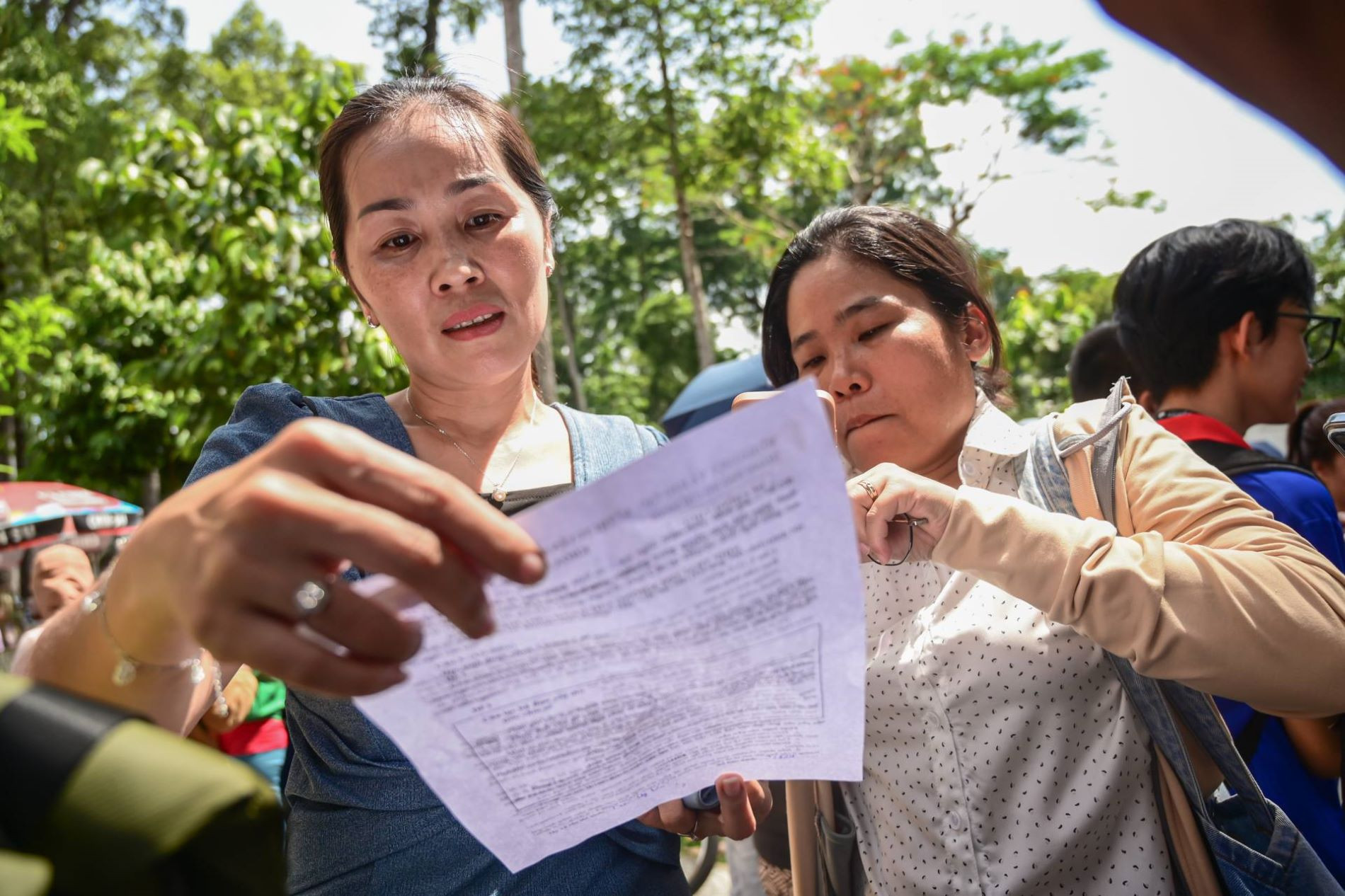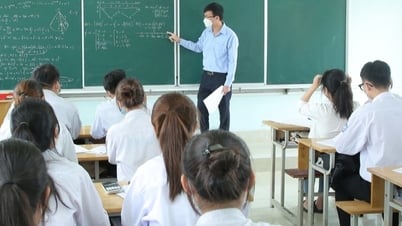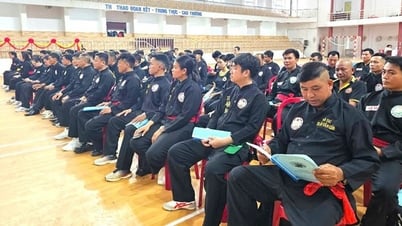Ho Chi Minh City students will take the 10th grade exam on July 6 and 7 with three subjects: Math, Literature, and Foreign Language (mainly English). The newest thing this year is that students will take the exam according to the 2018 program. What will the exam questions for Math, Literature, and English be like?
Math
The 10th grade math entrance exam will include the following knowledge streams: Geometry and measurement; numbers and algebra; statistics and probability.
The test content aims to assess mathematical abilities: Thinking and reasoning; problem solving; modeling. The test requires students to know how to apply the knowledge they have learned to solve practical problems; encourages self-study and creativity, avoiding the situation of learning by heart and rote. The test content helps students orient themselves to some necessary knowledge and skills when entering high school.

The exam structure is as follows:
Lesson 1. (1.5 points) Given the function y = ax2
a) Draw the graph (P) of the above function.
b) Find the points belonging to (P) that satisfy the given conditions.
Lesson 2. (1 point) Given the quadratic equation ax2 + bx + c = 0
a) Find the condition for the equation to have a solution.
b) Applying Viete's formula, calculate the value of the expression related to the solutions.
Lesson 3. (1.5 points) Practical math problems related to probability and statistics.
Lesson 4. (1 point)
a) Write expression A representing a certain quantity x in a real-life problem.
b) Find the value of x so that A satisfies a certain condition.
Lesson 5. (1 point) Practical math problems related to geometry:
Perimeter, area of triangle, quadrilateral, arc length, circumference of circle, area of circle, circular sector, piece of chalk, scarf... Lateral area, total area, volume of solids in reality...
Lesson 6. (1 point) Practical problems related to equations, inequalities, and systems of first-degree equations with two variables.
Lesson 7. (3 points) Plane geometry problem consists of 3 questions.
a) Prove that 4 points lie on a circle, the elements are parallel, perpendicular, equal...
b) Prove that the formula, elements are equal, collinear, concurrent...
c) Calculate length, perimeter, area, angle measurements...
Literature:
The reading comprehension section uses materials other than textbooks, including literary texts and one of two types: argumentative texts or informational texts. The total length of the materials in the test is no more than 1,300 words.
The writing part includes: First, writing a paragraph (about 200 words) with one of the following two requirements: Writing a paragraph recording your feelings about a poem or a poem. Writing a paragraph analyzing the content, the unique features of the work's artistic form and its aesthetic effect.
The second is to write an essay with one of the following two requirements: Write an argumentative essay about a problem in life, clearly presenting the problem and the writer's opinion (agreeing or disagreeing) about that problem; presenting convincing arguments and evidence. Write an argumentative essay about a problem that needs to be solved; present a feasible and convincing solution.
The structure of the literature exam will have two parts:
Part 1 (5.0 points): Reading and writing a paragraph.
Question 1 (3.0 points): Reading comprehension.
Question 2 (2.0 points): Write a paragraph.
Part 2 (5.0 points): Read and understand argumentative or informational texts and write social argumentative essays.
Question 1 (1.0 point): Reading comprehension.
Question 2 (4.0 points): Write a social argumentative essay.
The assessment basis is the requirements for reading comprehension and writing in the 2018 Literature program for secondary school, mainly grades 8 and 9. The test is designed in an integrated direction between assessing reading comprehension and writing skills, the content in the writing section is related to the text in the reading comprehension section.
English subject
The English exam assesses language proficiency not only based on students' knowledge of grammar and vocabulary by heart; it requires assessing the ability to understand and apply language knowledge in appropriate contexts, especially real-life situations. Changing the assessment method is in line with the use of appropriate teaching materials, changing the way of teaching and learning English, from mainly using the Grammar Translation method or the Direct Method to combining it with the Communicative Approach and applying language to practical situations.
The phonetics section includes: How to pronounce basic vowels and consonants; How to place word stress correctly.
The vocabulary and grammar sections will diversify the types of vocabulary and semantics of words according to the program framework.
The communication part, relating to real-life situations, includes: The ability to understand and respond to simple situations in real-life language.
Reading comprehension: Read a 180-200 word text and find information; Read and fill in the blanks of a 80-100 word text.
The writing part will include: Writing the correct word form to complete meaningful sentences; writing simple sentences based on given information; writing sentences using grammatical structure and word combination skills.
Exam structure:
Part 1 (1.0 point): Phonetics, from questions 1 to 4.
Part 2 (3.0 points): Vocabulary, grammar, communication, from question 5 to question 16.
Part 3 (3.0 points): Reading comprehension: Read and fill in the blanks: From questions 17 to 22; Read and answer the questions: From questions 23 to 28
Part 4 (4.0 points): Writing.
Write the correct form of the word: From sentence 29 to sentence 34.
Write suitable phrases according to the given information: Sentences 35, 36 - Write sentences: From sentence 37 to sentence 40.
The Ho Chi Minh City Department of Education and Training noted that this year's English exam will have two new questions about writing appropriate phrases based on given information. This question tests the ability to read dictionary notes to find linguistic information and apply knowledge.
Source: https://vietnamnet.vn/nam-dau-tien-thi-chuong-trinh-moi-de-thi-lop-10-tphcm-thay-doi-dot-bien-2402940.html




![[Photo] Prime Minister Pham Minh Chinh attends the groundbreaking ceremony of Trump International Hung Yen Project](https://vphoto.vietnam.vn/thumb/1200x675/vietnam/resource/IMAGE/2025/5/21/ca84b87a74da4cddb2992a86966284cf)
![[Photo] Prime Minister Pham Minh Chinh receives Rabbi Yoav Ben Tzur, Israeli Minister of Labor](https://vphoto.vietnam.vn/thumb/1200x675/vietnam/resource/IMAGE/2025/5/21/511bf6664512413ca5a275cbf3fb2f65)
![[Photo] Determining the pairs in the team semi-finals of the National Table Tennis Championship of Nhan Dan Newspaper](https://vphoto.vietnam.vn/thumb/1200x675/vietnam/resource/IMAGE/2025/5/21/eacbf7ae6a59497e9ae5da8e63d227bf)
![[Photo] Scientific workshop "Building a socialist model associated with socialist people in Hai Phong city in the period of 2025-2030 and the following years"](https://vphoto.vietnam.vn/thumb/1200x675/vietnam/resource/IMAGE/2025/5/21/5098e06c813243b1bf5670f9dc20ad0a)

























































































Comment (0)